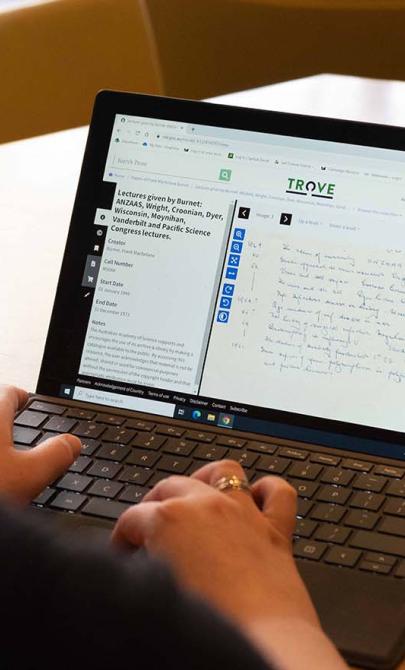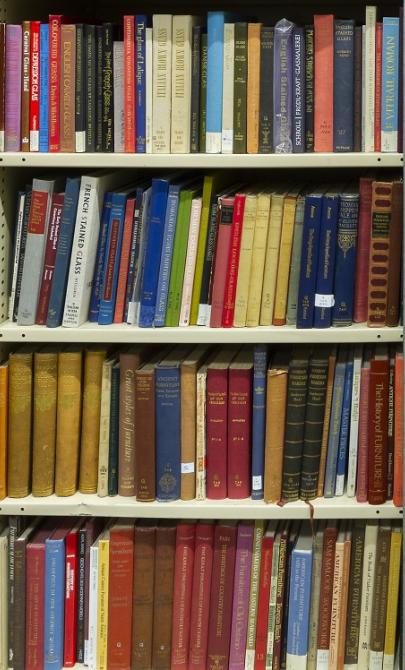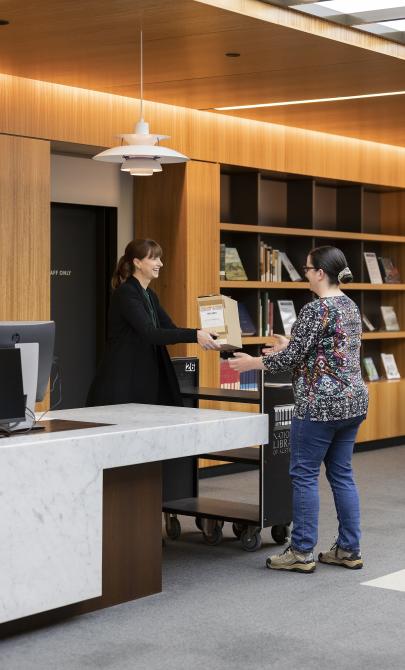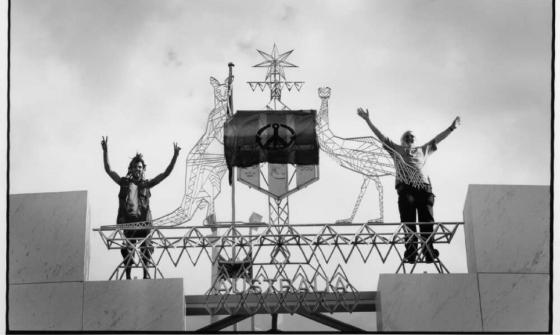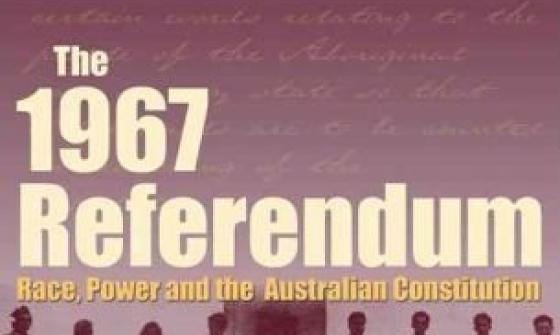Elections and referendums
Australian ballot or secret ballot
As well as compulsory voting, the Australian ballot is also a secret ballot, using a system of voting in which voters mark their choices in privacy on uniform ballots printed and distributed by the government or designate their choices by some other secret means.
Victoria and South Australia were the first states to introduce secrecy of the ballot in 1856. For that reason, the secret ballot is referred to as the Australian ballot.
The system spread to Europe and the United States to meet the growing public and parliamentary demand for protection of voters.
Find out more about the Australian ballot in the Encyclopaedia Britannica Online.
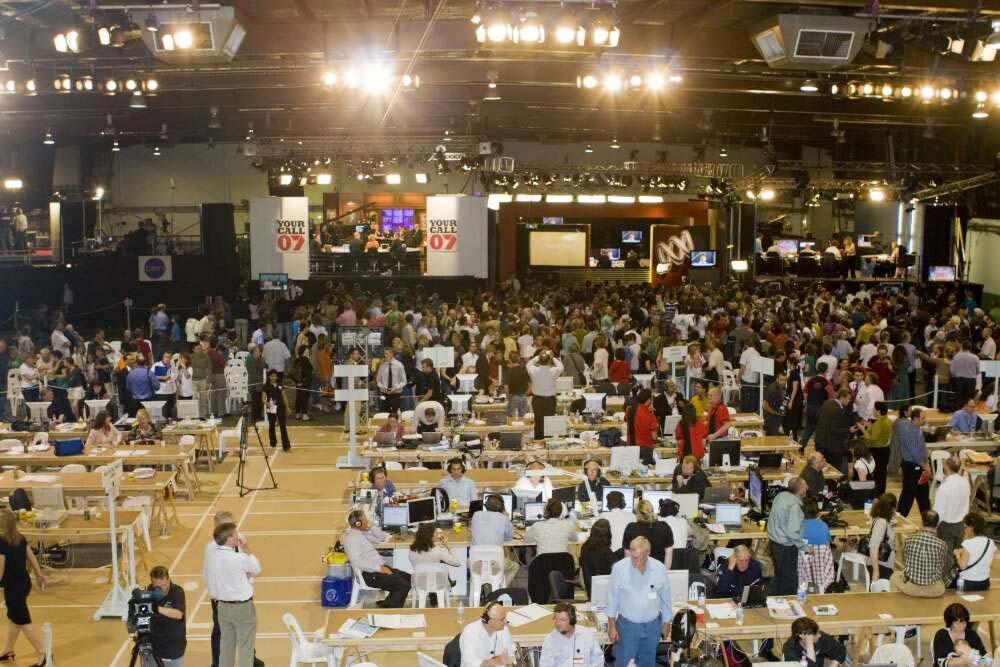
Mark Arundel, National Tally Room as seen from the second floor of the tally board during the Australian Federal Elections, Canberra, 24 November 2007, nla.gov.au/nla.obj-148469746
Mark Arundel, National Tally Room as seen from the second floor of the tally board during the Australian Federal Elections, Canberra, 24 November 2007, nla.gov.au/nla.obj-148469746
Australian Electoral Commission
The Australian Electoral Commission (AEC) is an independent statutory body and was created by a 1984 amendment to the Commonwealth Electoral Act 1918. It runs national elections and is responsible for the registration of political parties.
Find out more about the AEC and history of elections in Australia:
- a brief history of the evolution of universal suffrage, secret ballots and compulsory voting in Australia
- current Acts and Amendments governing the role of state and federal electoral commission
- a complete list of registered, deregistered and renamed parties since 1984
Referendums
A referendum is a vote of the Australian people on measures proposed or passed by the Australian Parliament.
Different types of referendums can be held, the most common of which is a Constitutional referendum.
More information, including a list of all referendums and results, is available from the Australian Electoral Commission.
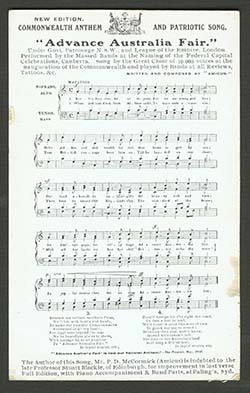
P. D McCormick & Stuart Blackie, Advance Australia fair, 1915, nla.gov.au/nla.obj-165937992
Fast fact
The poll for a national song, held on 21 May 1977, was not a proposal to amend the Constitution, and voting was not compulsory.
Key resources
These are selected resources from our rich collection of historical material supporting the study of Australian politics and government.
The Australian electoral system: origins, variations and consequences by David M. Farrell and Ian McAllister (2005)
Overview of the development of the electoral system in Australia
The Australian voter: 50 years of change by Ian McAllister (2011)
Discussion of Australian attitudes to voting
Voting and elections written by Associate Professor Rodney Smith and Dr. Anika Gauja (2013)
From the Hot Topics series published by the Legal Information Access Centre, State Library of NSW. A condensed version is available online
After the election: what happens? prepared by Leo Hardiman, Damian Page, Leah Edwards (2013)
General information and background from the Australian Government Solicitor
From secret ballot to democracy sausage: how Australia got to compulsory voting by Judith Brett (2019)
Election ephemera
Includes published leaflets, letters, 'how to vote' cards, posters, pamphlets, badges, stickers, hats, cardboard cutouts, DVDs and any other political material.
Broadsides and posters relating to the Australian federal elections campaigns
Appeal to Women Electors [Federal Election 1955?]
Item 21 from [Ephemera relating to the Australian federal elections campaigns: including press releases, policy speeches, advertising material, how to vote cards, etc.]
Records and publications of the 1998 Constitutional Convention, 1997-1998
Includes lists of candidates, how to vote information and publications on the 1998 Constitutional Convention on whether Australia should become a republic and if so, under which constitutional model.
Federal government statistics, 1901-1951, [ca. 1951]
Copies of original Federal Parliament House of Representatives party representation at each election in each state; and Senate representation and voting at each Senate election and state between 1901-1951.
Papers of Joseph Clark, 1930-1988 (bulk 1930-1969)
Correspondence, circulars, speeches and clippings on elections by long-serving federal politician, Joseph James Clark, including his father’s papers on the 1916 conscription campaign and referendum.
How to search and find items
Search the catalogue
To find information about Australian elections and referendums, try searching the catalogue.
When entering search terms, include the year of the election if known.
Learn more about how to use the catalogue
Subject search
To search for general works about Australian elections and referendums, try searching the catalogue by subject.
For example:
- Australia Parliament Elections 2022
- Campaign literature Australia
- Women Suffrage Australia
- Proportional representation Australia
Author search
You can also search by author where a governing body has published the material.
For example:
Where else to look
ABC Elections
ABC News website, including Antony Green’s Election Blog
Psephos Adam Carr's Election Archive
Collects historical electoral statistics from 182 countries
Archived election campaigns
Australian Web Archive
Case study: Compulsory voting
Q: I am in the United States. I have heard about an Australian law that forces people to vote or they get a fine. Can you supply more details?
Voting at federal elections is compulsory for all citizens included on the Australian Federal electoral roll.
The introduction of compulsory voting varied from state to state. You can read about the background and history of compulsory voting in Australia on the Australian Electoral Commission website.
Anyone who is unable to provide a valid and sufficient reason to the Divisional Returning Officer for failure to vote at a federal election, and who does not wish to have the matter dealt with by a Magistrates Court, may pay a penalty.
If the person refuses to pay the penalty, then the matter may be referred to a Magistrates Court, where a higher penalty (plus costs) may be ordered on conviction.
On average about 5 per cent of enrolled voters fail to vote. In recent federal elections, with a voter turnout of approximately 95 per cent, informal voting (blank or not properly completed ballots) has accounted for about 5 per cent of all the votes cast (see: Compulsory voting in Australia on the Australian Electoral Commission website).
Get help with your research
Our specialist staff can help you with your research, to locate resources and use our microform and scanning equipment but they cannot undertake extensive or ongoing genealogical, historical or other research on your behalf.
Find out more in our Information and research services policy.
